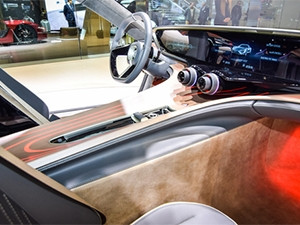
The automotive heads-up display (HUD) market is set to quadruple, reaching 16 million installed units by 2021.
This is according to Juniper Research's recent study: Automotive HUDs: Innovations, Strategies & Leaders 2016-2021.
According to the study, the market will be driven by increased adoption in mass-market vehicles, with growth boosted by aftermarket HUD sales.
HUD provides information such as oil level or tyre pressure, and alerts the driver to the distance between two vehicles, says Research and Markets. Incorporating advanced display technology can dynamically upgrade the functionality of cars, it adds.
The rising need for information, paired with rising safety concerns in the automotive field, necessitated the deployment of several modern display technologies, says Research and Markets.
According to IHS, in 2010, only 2% of total automotive sales were equipped with HUDs, and this number is expected to increase to 9% by the end of 2020.
The scope of advanced display technology in the form of HUD is likely to be high in the developed countries, says Research and Markets.
Asian countries, on the other hand, with rising consumer awareness paired with increasing purchasing power, could provide ample growth opportunity for the market, it adds.
However, factors such as high cost of vehicle integration and underdeveloped infrastructure in developing countries are hindering the market, says Stratistics Market Research Consulting.
Competitive landscape
The global automotive HUD market is becoming competitive, as vendors like Bosch, Continental, Delphi, Denso, Harman, Nippon Seiki, Panasonic and Visteon are actively developing innovative displays to take advantage of the untapped potential of the market, says Technavio.
Intense competition, rapid advances in technology and the unpredictable nature of the global automotive industry constitute significant risk factors for the vendors in the market, it adds.
Due to the high level of competition, it is crucial for vendors to distinguish their products and service offerings through a clear and unique value proposition, notes Technavio.
Augmented reality HUD
Juniper believes the market will begin to accelerate in 2017 as more original equipment manufacturers (OEMs) integrate HUDs into their medium segment cars. It predicts that around one in eight new vehicles will come with an OEM-fitted HUD by 2021.
Juniper adds that augmented reality (AR) is the most exciting advance in HUD innovation, with navigation and advanced driver assistance systems safety warnings being the biggest opportunities.
Also, the availability of sophisticated AR content could be a game-changer, leading to an upswing in HUD installations if drivers perceive value to the technology.
However, cost and technical challenges remain which, coupled with production delays, mean AR-HUDs will account for less than 6% of the OEM HUD market by 2021.
Moreover, as more content is added, there is a danger of information overload for the driver, particularly in the case of smartphone-based aftermarket HUDs, where vendors seem keen to add infotainment-type content in a bid to make their products look as appealing as possible to potential customers, says Juniper.
"At present, there is a legal void with respect to what type of content should or should not be displayed on HUDs," says research author Gareth Owen.
Share